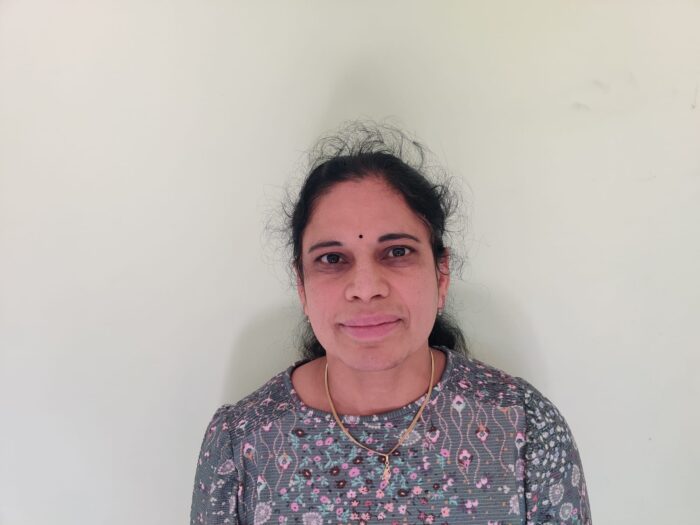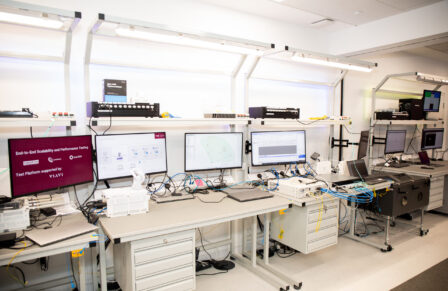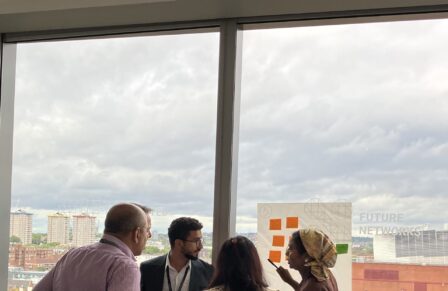International Women in Engineering Day – Reflections from engineers in telecoms
Posted 23 Jun 2023
International Women in Engineering Day – Reflections from the women driving telecoms innovation
International Women in Engineering Day is making its annual comeback – it is a day dedicated to celebrating the tremendous contributions female engineers make to this country, and worldwide. In 2021, Engineering UK indicated that only 16.5% of engineers are women in the United Kingdom. This represents only a 6% increase in the last 10 years. Whilst the percentage of female engineers is steadily increasing over the decade, it is pivotal for all of us to play our part in encouraging more females to enter the engineering space.
A key part of Digital Catapult’s mission to accelerate digital adoption is working with the UK’s trailblazing founders, technology experts, and business leaders. To celebrate International Women in Engineering Day and the key role women have played in accelerating the digital future, we sat down with Sweta Anmulwar and Padmavathi Challa to hear more about their roles as female engineers at Digital Catapult working on the SONIC Labs programme and their reflections as women working in the telecommunications space.
Q&A with Sweta Anmulwar and Padmavathi Challa


Tell us a bit about your role at Digital Catapult and in SONIC Labs. What does a typical day involve and what do you enjoy most about your role?
SWETA:
I am a Cloud Network Engineer in the SONIC Labs team at Digital Catapult. My day-to-day role involves designing customer information questionnaires (CIQ) based on the design information shared by different vendors, as well as more physical work in our lab, which involves putting the servers and switches in the rack with the team, cabling, and labelling everything accordingly. The designs that I make help to accommodate and facilitate different vendors on the SONIC Labs programme, with a key part of my role being to help to check whether various components are interoperable. I really enjoy working on cutting-edge technologies within Digital Catapult and getting to experience delivering different services working with a variety of vendors.
PADMAVATHI:
I am a Senior 5G Technologist supporting the SONIC Labs programme, working in the wider engineering team at Digital Catapult. I mainly solve technical integration issues, have discussions with vendors, execute end-to-end performance and document results and lessons learned. I also participate in technical workshops with all the chain leads where we discuss any blocking issues. I am fascinated with new technologies. What I enjoy the most about my role is investigating and debugging the issues, finding the root cause, and fixing the issue – I find demonstrating solutions extremely satisfying.
How did you become interested in this area of telecoms engineering?
SWETA:
When I finished my 10th standard (GCSE) in India, I was inspired by a lady who was working in the polytechnic field. At that time, despite not knowing the lady, I found it motivating that someone had a job in a field that is unheard of for women in India. My dad encouraged me to finish 12th standard (A-levels) first and pursue engineering, a career in which I could utilise the areas I enjoyed most at school like mathematics and science. I then studied for a Masters in Engineering and went on to an internship at the Centre for Development of Advanced Computing R&D, which kickstarted my career.
PADMAVATHI:
I have always been very fascinated by new technologies, learning and understanding them. On top of that, I love learning new things online, I’m interested in mathematics and I’m very good at problem-solving – all these skills supported me to pursue a career in engineering. Where I grew up in India, most parents think of typical careers such as medicine and engineering and when my father suggested medicine as a career for me, I realised I was afraid of biology, you know, dissections, and that’s when I knew medicine is not for me and engineering in the technology field was my preferred option!
What advice would you give to other women looking to pursue a career as an engineer in this area?
SWETA:
Looking at a career in engineering as an energy of creation where we get to design, build and test systems just like when we cook! I guess it’s having the urge to create and look at the profession without thinking engineering is only for men. Go ahead and try it, and if you like it, go for it!
PADMAVATHI:
My advice for future female engineers is to be confident in your ideas and thoughts and believe in yourself. Determine your short-term and long-term career goals early in your career, and then focus to find the right path and mentors to achieve your goals. Don’t be discouraged by existing stereotypes. Just keep on going.
Do you think enough is being done by the industry to address gender imbalance? What barriers do women encounter in engineering?
SWETA:
I believe there is a gender imbalance in the industry. I remember when I was doing my PhD at the University of Surrey in 2019, I was the only woman on that floor. I think there’s still an unconscious bias in many organisations. Although, normally it won’t happen if someone knows your educational background or your work experience. As a woman in a male-dominated sector, you have to work hard in everything to gain recognition, but be confident in your abilities, work for a supportive employer and you should see doors being opened for you.
PADMAVATHI:
I think it is progressing, however, a much smaller portion of women have leading roles and there is a huge pay gap for the same job. We must be more deliberate and intentional about the specific actions required to accelerate and progress much faster. For example, developing policy solutions that address the underlying causes of inequality, I think STEM subjects should be taught and introduced in school much earlier on. The main barriers are insufficient information about STEM subjects at school, hence in many cases females are less interested in STEM subjects. There should be more information on technical jobs, and having role models in STEM careers will help bring more women into engineering.
What are the biggest misconceptions people have about women in Engineering?
SWETA:
I think there are misconceptions around long-running stereotypes of women not being intelligent enough and historically about how women juggle between managing home or family life (if they choose to have a family) and having a career. I think this is changing slowly, but there are still some hurdles to overcome here.
PADMAVATHI:
I agree, there are some misconceptions that women are not interested in technology, and they lack numerical ability skills for technical jobs, and so on. Some people think they are not competitive enough. And for some others, women are not committed to the career long term. For example, women need to balance work life and home life – there shouldn’t be a difference here to how men are perceived.
Figures indicate that just 16.5% of engineers are women – how can companies/organisations collectively encourage more women to enter the space?
SWETA:
I think having a change of perspective, from a very early age. Maybe organisations can offer internship opportunities which will help more women to take on engineering. For example, this could start off with a short two-week internship, alongside advocating for females in engineering. We need more female role models to be visible to inspire the next generation.
PADMAVATHI:
I think that organisations need to become STEM ambassadors. I believe more people championing STEM disciplines and career paths is the best way to bring females into the tech industry. For example, organisations can offer their time and enthusiasm to bring STEM subjects to life within the schools in order to help and make them interested in technology from a young age. I think organisations should also create mentoring programmes in order to recruit and retain more women in engineering. The value of mentorship is irreplaceable, it creates a supportive community. On top of that, having support and offering flexible work arrangements.
What can we do to support more women to get into engineering
Women constitute nearly half of the world’s population, and their contribution is key to bringing innovative solutions, helping teams perform better with gender diversity, and introducing different working methods in the workplace. Furthermore, engineering is an enabling career. There are many opportunities for women across all disciplines and there is no limit to what one can achieve in an engineering career.
At Digital Catapult we have a number of initiatives aimed at encouraging more women into technology and engineering in early careers, such as through work experience and apprenticeships. Discover more about some of the women working in tech at Digital Catapult here and check out our current job vacancies here.
Discover further insights from the UK Telecom Innovation Network (UKTIN) – a great platform to keep updated with cutting-edge Telecom trends in the UK and internationally, explore opportunities, and connect with fellow professionals.
At Digital Catapult we are committed to building an organisation that is fully representative and reflective of UK society. You can find out more about our equality, diversity and inclusion charter here.

SONIC Labs – the role of Test and Measurement (T&M) tools to validate Open RAN interoperability
Hear from Xhafer Krasniqi, Senior 5G Technologist and Farhad Mehranat, Senior RAN Verification Engineer at Digital Catapult on the role of…
Collaboration is key to drive innovation in the global Open RAN ecosystem
Hear from Sophie Weston, Senior Policy, Research and Engagement Manager at Digital Catapult on how collaboration can drive innovation in the…
Exploring the potential of Open RAN technology through the SONIC Labs programme
Dr Dritan Kaleshi gives an overview of the SONIC Labs programme and Open RAN technology.
The Building Blocks of RAN Innovation – SONIC Labs guest blog
This is a guest blog from VMware exploring the building blocks of RAN innovation.
My Top Five Reflections on MWC 2023
Hear from Paul Ceely, Director of Technology Strategy at Digital Catapult, on his top 5 reflections on MWC 2023



